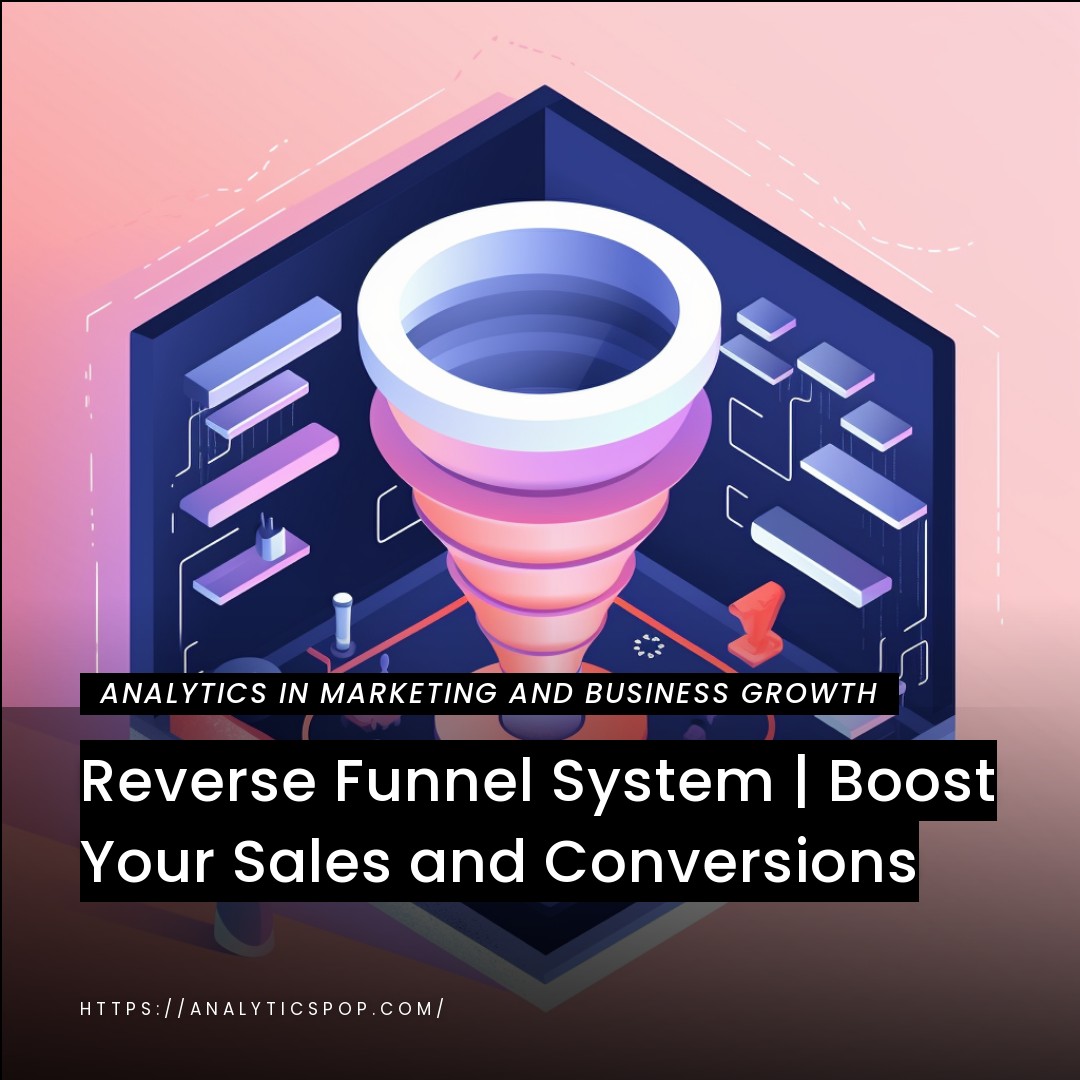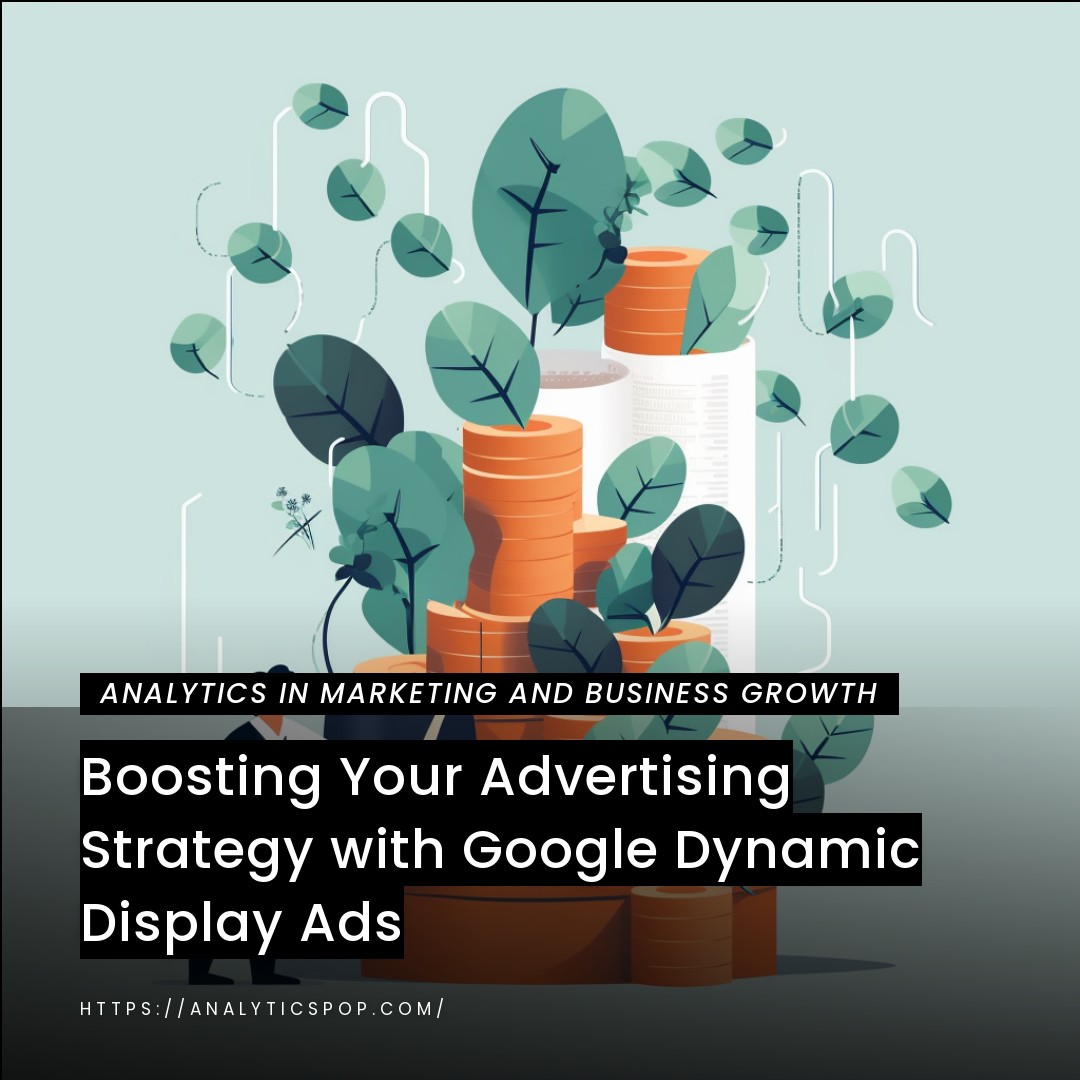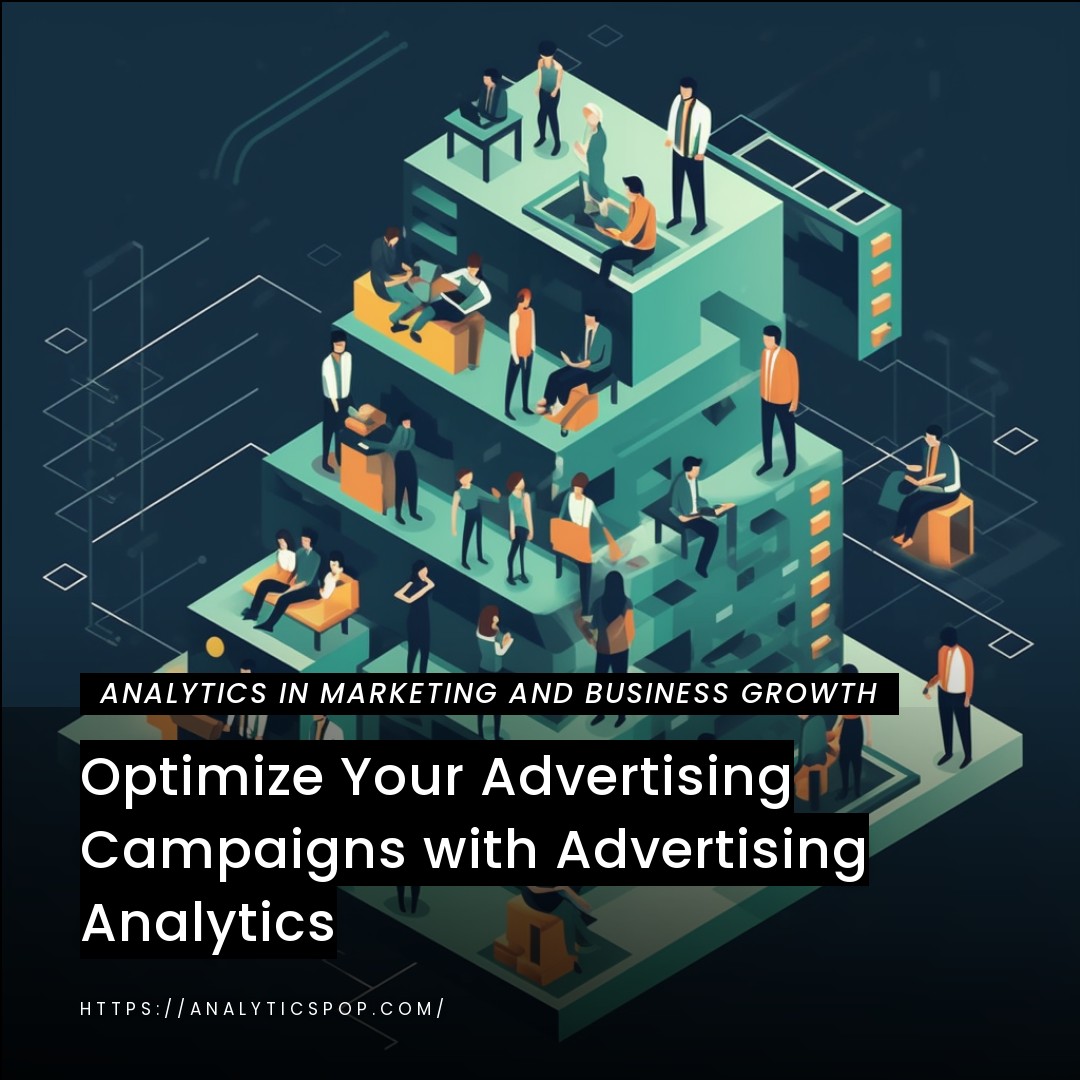Are you tired of spending all your time and effort on sales and marketing, only to see minimal results?
Do you wish there was a way to streamline your sales process and increase your conversions?
Look no further than the reverse funnel system.
The reverse funnel system is a revolutionary approach to sales that focuses on qualifying leads before they even enter your funnel. This allows you to spend more time on high-quality leads who are more likely to convert, leading to increased sales and revenue.
In this article, we’ll take a closer look at the reverse funnel system and how it can transform your sales process. From understanding the basics to implementing it in your business, we’ll cover all the steps you need to take to boost your sales and conversions.
Understanding the Reverse Funnel System
The reverse funnel system is a marketing strategy that flips the traditional sales funnel. Instead of starting with a large pool of leads and narrowing them down to customers, the reverse funnel system begins with a smaller collection of highly qualified leads. It nurtures them through the sales process until they become customers.
This approach can be efficient for high-ticket items or services, as it allows businesses to focus their time and resources on leads who are most likely to convert. By using targeted messaging and personalized outreach, companies can build relationships with their leaders and provide the information and support they need to make a purchase decision.
According to a survey by Marketing Sherpa, companies that use a targeted approach to lead generation and nurturing see a 45% increase in lead generation ROI compared to companies that use a more general approach. The reverse funnel system can help businesses improve their sales and marketing efforts by focusing on quality over quantity and providing a more personalized experience for their leads.
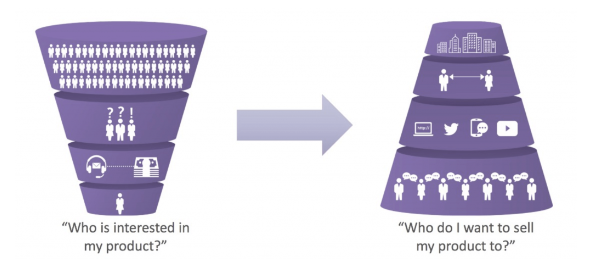
How does the reverse funnel system work?
The reverse funnel system is a sales and marketing strategy that starts with a smaller pool of highly qualified leads and nurtures them through the sales process until they become customers.
The process begins with identifying and targeting high-quality leads most likely to convert. These leads are typically identified through demographic and psychographic data and their behavior and engagement with the business.
Once the charges have been identified, the business begins a targeted outreach campaign, providing them with valuable information, personalized messaging, and support. This helps build a relationship with the leads and encourages them to engage further with the business.
As the charges move through the sales process, the business continues to provide them with targeted messaging and support, addressing any concerns or questions they may have. This helps build trust and confidence in the industry and its products or services.
The goal of the reverse funnel system is to provide a highly personalized and targeted sales experience that addresses the specific needs and concerns of each lead. By focusing on quality over quantity and providing targeted messaging and support, businesses can improve their conversion rates and achieve tremendous success in their sales and marketing efforts.
Benefits and drawbacks of the reverse funnel system
The reverse funnel system is a sales and marketing strategy with benefits and drawbacks. Here are some of the key advantages and disadvantages:
Benefits:
- Higher Conversion Rates: The reverse funnel system can lead to higher conversion rates and improved ROI by focusing on high-quality leads and providing personalized messaging and support.
- More Efficient Use of Resources: The reverse funnel system allows businesses to optimize resources by focusing on quality over quantity. Companies can allocate their time and resources more effectively, increasing efficiency and profitability.
- Better Customer Relationships: By providing personalized support and messaging, businesses can build stronger customer relationships and improve customer loyalty.
Drawbacks:
- Limited Reach: The reverse funnel system focuses on a smaller pool of highly qualified leads, meaning businesses may miss out on potential customers outside their targeted demographic.
- Higher Costs: The reverse funnel system requires a higher level of investment in time and resources to nurture leads through the sales process, which can lead to higher costs overall.
- Longer Sales Cycle: Because the reverse funnel system focuses on building relationships and providing personalized support, it can lead to a longer sales cycle than traditional sales approaches.
The reverse funnel system can be an effective strategy for businesses selling high-ticket items or services. However, there may be better fits for companies with limited resources or those looking to reach a broader audience.
Key components of the reverse funnel system
The reverse funnel system is a sales and marketing strategy aiming to improve lead quality and increase conversions by flipping the traditional sales funnel. Here are some of the critical components of the reverse funnel system:
- Targeted Lead Generation: The reverse funnel system begins with identifying and targeting high-quality leads most likely to convert. This is done through demographic and psychographic data and behavioral and engagement data.
- Personalized Outreach: Once the leads have been identified, the business begins a targeted outreach campaign, providing them with valuable information, customized messaging, and support. This helps build a relationship with the leads and encourages them to engage further with the business.
- Nurturing and Education: As the leads move through the sales process, the business continues to provide them with targeted messaging and support, addressing any concerns or questions they may have. This helps build trust and confidence in the industry and its products or services.
- Sales Process Optimization: The reverse funnel system continuously optimizes the sales process to improve efficiency and increase conversions. This includes identifying areas of the sales process that may be causing friction or drop-offs and finding ways to address them.
- Data Analysis and Optimization: Finally, the reverse funnel system involves ongoing data analysis and optimization to refine the targeting and messaging strategies. This allows businesses to continually improve their sales and marketing efforts and achieve tremendous success.
A reverse funnel system is a comprehensive approach to sales and marketing that involves targeting high-quality leads, providing personalized outreach and support, and continuously optimizing the sales process through data analysis and refinement.
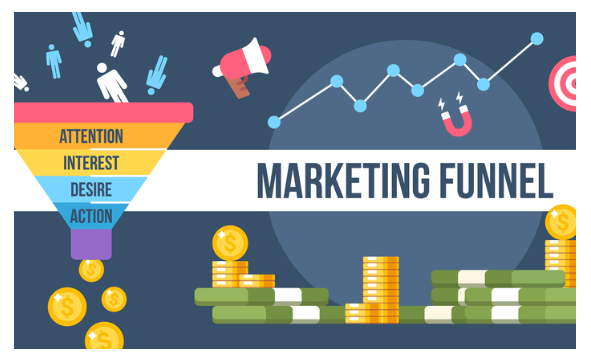
Creating a High-Converting Funnel
Creating a high-converting funnel involves a strategic lead generation, nurturing, and conversion approach. Here are some critical steps to creating a high-converting funnel:
- Define Your Ideal Customer: The first step is to define your ideal customer by creating a detailed buyer persona. This includes demographic and psychographic data and behavioral and engagement data.
- Lead Generation: Once you have identified your ideal customer, you can begin a targeted lead generation campaign. This can include social media ads, email marketing, and content marketing.
- Lead Nurturing: Once you have captured leads, nurturing them through the sales process is essential. This involves providing valuable information and personalized messaging addressing their needs and concerns.
- Conversion Optimization: To optimize conversion rates, continually testing and refining the sales process is essential. This includes analyzing data to identify areas where leads are dropping off and finding ways to address these issues.
- Retention and Upsell: Focusing on retention and upsell opportunities is essential to maximize customer lifetime value. This can include personalized messaging, loyalty programs, and targeted upsell campaigns.
By following these key steps and continually refining your approach through data analysis and optimization, you can create a high-converting funnel that maximizes your ROI and drives growth for your business.
Importance of creating a high-converting funnel
Creating a high-converting funnel is crucial for any business that wants to succeed in today’s competitive marketplace. Here are some reasons why:
- Improved ROI: A high-converting funnel can improve your return on investment (ROI) by increasing the number of leads and customers you acquire. By optimizing the funnel for conversion, you can get more value out of your marketing efforts and generate a greater return on your investment.
- Better Customer Experience: A well-designed funnel provides a seamless and personalized experience for customers, which can improve their perception of your brand and increase loyalty over time. You can build stronger customer relationships and increase customer satisfaction by delivering value and addressing their needs and concerns.
- Increased Efficiency: A high-converting funnel allows you to optimize your sales process, increasing efficiency and reducing costs. By identifying areas of the funnel where leads are dropping off or experiencing friction, you can make targeted improvements that lead to more conversions and fewer wasted resources.
- Competitive Advantage: In today’s crowded marketplace, a high-converting funnel can give you a competitive advantage by allowing you to acquire and retain customers more effectively than your competitors. By providing a better customer experience and optimizing your sales process, you can differentiate yourself from other businesses and attract more customers.
Creating a high-converting funnel is critical for businesses that want to stay competitive and grow over time. By focusing on lead generation, nurturing, conversion, and retention, you can maximize your ROI, improve customer satisfaction, increase efficiency, and gain a competitive advantage in your industry.
Techniques for creating a high-converting funnel
Creating a high-converting funnel requires a strategic approach that involves several techniques. Here are some of the most effective methods for creating a high-converting funnel:
- A/B Testing: A/B testing involves creating two versions of a landing page, email, or another element of your funnel and testing them against each other to determine which performs better. This can help you identify the best messaging, design, and offers to maximize conversions.
- Personalization: Personalization involves tailoring your messaging and offers to your leads’ specific needs and interests. This can include personalized emails, landing pages, and product recommendations based on their browsing and purchase history.
- Clear Calls to Action: Clear calls to action are essential for guiding leads through the sales process. This includes clear and compelling messaging that tells leads what action to take to move closer to a purchase.
- Lead Magnets: Lead magnets are valuable content or offers provided in exchange for contact information. This can include free ebooks, webinars, or consultations that provide value to leads and encourage them to engage further with your business.
- Retargeting: Retargeting involves targeting leads already engaged with your business with relevant ads and messaging. This can keep your brand top of mind and encourage leaders to convert over time.
- Sales Funnel Optimization: Sales funnel optimization involves continually analyzing data and making targeted improvements to the horn to improve conversion rates. This can include identifying areas of the funnel where leads are dropping off and finding ways to address these issues.
By incorporating these techniques into your funnel strategy, you can create a high-converting funnel that maximizes your ROI, improves customer satisfaction, and helps your business grow over time.
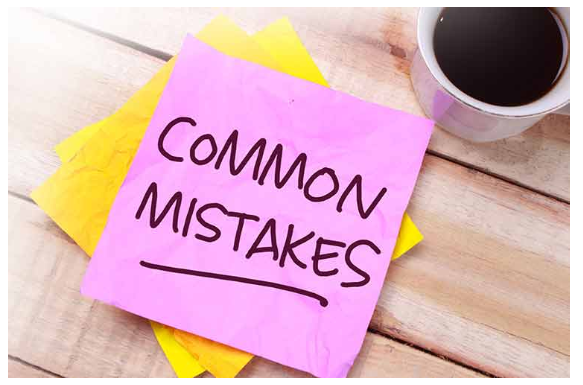
Common mistakes to avoid when creating a high-converting funnel
Creating a high-converting funnel can be challenging, and businesses should avoid several common mistakes to ensure success. Here are some of the most common mistakes to avoid when creating a high-converting funnel:
- Lack of Clarity: A lack of clarity in messaging, calls to action, and overall design can cause confusion and lead to a high bounce rate. Ensure your messaging is clear and compelling and your calls to action are easy to find and understand.
- Overcomplicating the Process: A complex or confusing sales process can deter potential customers and reduce conversion rates. Keep the process streamlined and straightforward to make converting leads easy.
- Ignoring Lead Nurturing: Lead nurturing can prevent leads from losing interest and abandoning the funnel. Ensure you provide valuable information and support throughout the sales process to keep tips engaged.
- Failure to Test and Optimize: Please test and optimize your funnel to avoid missed opportunities for improvement. Continually analyze data and make targeted improvements to improve conversion rates over time.
- Ineffective Follow-Up: Ineffective follow-up can cause leads to lose interest and abandon the funnel. Ensure you follow up with leaders promptly and personally to keep them engaged and move them closer to a purchase.
By avoiding these common mistakes and focusing on a strategic approach to lead generation, nurturing, and conversion, you can create a high-converting funnel that maximizes your ROI and drives growth for your business.
Driving Traffic to Your Funnel
Driving traffic to your funnel is crucial in creating a high-converting sales and marketing strategy. Here are some practical ways to drive traffic to your funnel:
- Search Engine Optimization (SEO): SEO involves optimizing your website and content to rank higher in search engine results. This can include keyword research, content optimization, and technical SEO improvements.
- Paid Advertising: Paid advertising can be an effective way to drive targeted traffic to your funnel. This includes search engine ads, social media ads, and display ads that target specific demographics and interests.
- Social Media Marketing: Social media marketing involves promoting your funnel through social media channels like Facebook, Twitter, and Instagram. This can include organic posting, paid advertising, and influencer marketing.
- Content Marketing: Content marketing involves creating valuable content that attracts and engages your target audience. This can include blog posts, videos, infographics, and other types of content that address the needs and interests of your audience.
- Email Marketing: Email marketing involves sending targeted messages to your email list to promote your funnel and provide value to your subscribers. This can include newsletters, promotions, and personalized messaging based on subscriber behavior.
- Referral Marketing: Referral marketing encourages existing customers and leads to refer their friends and family to your funnel. This can include referral incentives, social sharing buttons, and other strategies to enable word-of-mouth marketing.
Using these strategies to drive traffic to your funnel, you can increase your lead generation and improve your conversion rates over time. It’s important to continually analyze data and optimize your traffic sources to ensure you drive high-quality traffic to your funnel.
Why is driving traffic to your funnel necessary in the reverse funnel system?
Driving traffic to your funnel is a crucial step in the reverse funnel system. This sales and marketing strategy focuses on nurturing high-quality leads through the sales process until they become customers. To achieve this, it’s essential to have a steady flow of high-quality traffic entering your funnel.
The reverse funnel system focuses on targeting highly qualified leads, meaning driving targeted traffic to your funnel is essential. By driving traffic to your funnel, you can attract potential customers who are most likely to convert and provide them with valuable information and support throughout the sales process.
With a steady flow of high-quality traffic, it’s easier to implement the reverse funnel system effectively. By using targeted traffic sources like search engine optimization, paid advertising, and social media marketing, you can attract leads who are most likely to be interested in your products or services and provide them with personalized messaging and support to help move them through the sales process.
Driving traffic to your funnel is a critical component of the reverse funnel system. Focusing on quality over quantity and providing personalized support and messaging can improve your conversion rates and achieve tremendous success in your sales and marketing efforts.
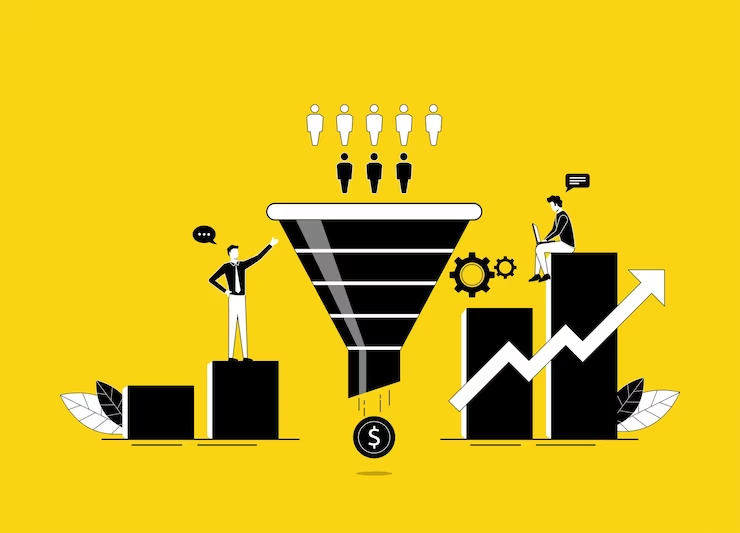
What are some techniques for driving traffic to your funnel in the reverse funnel system?
Several effective techniques exist for driving traffic to your funnel in the reverse funnel system. Here are some of the most effective methods:
- Targeted Content Marketing: Creating targeted content that addresses the needs and interests of your ideal customers can help attract high-quality traffic to your funnel. This can include blog posts, videos, infographics, and other types of content that provide value and help establish your brand as a thought leader in your industry.
- Paid Advertising: Paid advertising can be an effective way to drive targeted traffic to your funnel. This includes search engine ads, social media ads, and display ads that target specific demographics and interests.
- Search Engine Optimization (SEO): Optimizing your website and content for search engines can help attract high-quality traffic to your funnel. This includes keyword research, content optimization, and technical SEO improvements.
- Social Media Marketing: Social media marketing involves promoting your funnel through social media channels like Facebook, Twitter, and Instagram. This can include organic posting, paid advertising, and influencer marketing.
- Email Marketing: Email marketing involves sending targeted messages to your email list to promote your funnel and provide value to your subscribers. This can include newsletters, promotions, and personalized messaging based on subscriber behavior.
- Referral Marketing: Referral marketing encourages existing customers and leads to refer their friends and family to your funnel. This can include referral incentives, social sharing buttons, and other strategies to enable word-of-mouth marketing.
Using these techniques to drive traffic to your funnel, you can attract high-quality leads and provide personalized messaging and support to help move them through the sales process. It’s important to continually analyze data and optimize your traffic sources to ensure you drive high-quality traffic to your funnel.
What common mistakes to avoid when driving traffic to your funnel in the reverse funnel system?
Several things could be improved to ensure success when driving traffic to your funnel in the reverse funnel system. Here are some of the most common mistakes:
- Focusing on Quantity over Quality: The reverse funnel system focuses on quality leads rather than quantity. It’s essential to avoid driving low-quality traffic to your funnel and instead focus on attracting high-quality leads who are most likely to convert.
- Lack of Targeting: Without targeting, it’s difficult to attract high-quality traffic to your funnel. Make sure you are using targeting techniques like keyword research, demographic targeting, and psychographic targeting to attract the right leads to your funnel.
- Overcomplicating the Funnel: An overly complex or confusing funnel can deter potential customers and reduce conversion rates. Keep the funnel streamlined and straightforward to make converting leads easily.
- Lack of Testing and Optimization: Please test and optimize your traffic sources to avoid missed opportunities for improvement. Continually analyze data and make targeted improvements to improve traffic quality and conversion rates.
- Ignoring Mobile Optimization: With most internet traffic coming from mobile devices, ensuring your funnel is optimized for mobile users is essential. Make sure your website and content are mobile-friendly and easy to navigate on smaller screens.
By avoiding these common mistakes and focusing on a strategic approach to driving high-quality traffic to your funnel, you can maximize your ROI and achieve tremendous success in your sales and marketing efforts in the reverse funnel system.
Nurturing Your Leads
Nurturing your leads is a critical step in the reverse funnel system, which aims to build relationships with high-quality information and guide them through the sales process. Here are some effective techniques for nurturing your leads:
- Personalized Messaging: Personalizing messaging that addresses your leads’ needs and concerns can help build trust and confidence in your brand. Use data to personalize your messaging, such as their browsing or purchase history.
- Value-Added Content: Providing valuable content that helps educate and inform your leads can help establish your brand as a thought leader in your industry. This can include blog posts, white papers, webinars, and other types of content that address the needs and interests of your leads.
- Consistent Follow-Up: Consistently following up with your leads can help keep your brand top-of-mind and move them closer to a purchase. This can include email marketing, social media outreach, and phone calls.
- Personalized Support: Providing customized support and guidance throughout the sales process can help build trust and confidence in your brand. This can include one-on-one consultations, demos, and personalized recommendations based on the specific needs of your leads.
- Lead Scoring: Lead scoring involves assigning a score to each lead based on their behavior and engagement with your brand. This can help prioritize leads based on their likelihood to convert and ensure that you provide personalized messaging and support to those most likely to convert.
Using these techniques to nurture your leads, you can build strong relationships and guide them through the sales process, leading to higher conversion rates and tremendous success in the reverse funnel system.

Why is it important to nurture your leads?
Nurturing your leads is essential in the reverse funnel system for several reasons. Here are some of the critical reasons why information nurturing is necessary:
- Builds Trust and Relationships: By providing personalized messaging, value-added content, and personalized support, you can build trust and establish strong relationships with your leads. This can lead to higher customer loyalty and more excellent lifetime value.
- Improves Conversion Rates: Nurturing your leads through sales can help move them closer to a purchase and improve your conversion rates. You can address their needs and concerns by providing personalized messaging and support and guiding them toward a purchase.
- Maximizes ROI: Nurturing your leads can help you maximize your return on investment by ensuring that you are focusing your efforts on the most qualified leads. You can improve your ROI and reduce wasted resources by providing personalized messaging and support to those most likely to convert.
- Increases Customer Satisfaction: By providing personalized messaging and support, you can improve customer satisfaction and reduce the likelihood of churn. Satisfied customers are more likely to refer others to your business and provide positive reviews and testimonials.
Nurturing your leads is critical for success in the reverse funnel system. By providing personalized messaging, value-added content, and personalized support, you can build strong relationships, improve conversion rates, maximize ROI, and increase customer satisfaction.
What are the different techniques for nurturing your leads?
Several effective techniques for nurturing your leads in the reverse funnel system exist. Here are some of the most common methods:
- Personalized Email Marketing: Email marketing is a powerful tool for nurturing leads. You can build trust and guide them through the sales process by sending personalized emails that address your leads’ specific needs and concerns. This can include welcome emails, educational content, and personalized promotions.
- Lead Scoring: Lead scoring involves assigning a score to each lead based on their behavior and engagement with your brand. This can help prioritize leads based on their likelihood to convert and ensure that you provide personalized messaging and support to those most likely to convert.
- Content Marketing: Creating valuable content that educates and informs your leads can help establish your brand as a thought leader in your industry. This can include blog posts, white papers, webinars, and other types of content that address the needs and interests of your leads.
- Personalized Support: Providing customized support and guidance throughout the sales process can help build trust and confidence in your brand. This can include one-on-one consultations, demos, and personalized recommendations based on the specific needs of your leads.
- Retargeting: Retargeting involves targeting leads already engaged with your business with relevant ads and messaging. This can keep your brand top of mind and encourage leaders to convert over time.
- Social Media Engagement: Engaging with your leads on social media can help build relationships and keep your brand in mind. This can include responding to comments and messages, sharing valuable content, and providing personalized recommendations.
Using these techniques to nurture your leads, you can build strong relationships, improve conversion rates, and succeed tremendously in the reverse funnel system. It’s important to continually analyze data and optimize your lead nurturing strategy to ensure you provide personalized messaging and support to those most likely to convert.
Common mistakes to avoid when nurturing your leads
When nurturing your leads in the reverse funnel system, there are several common mistakes to avoid to ensure success. Here are some of the most common mistakes:
- Lack of Personalization: Failing to provide personalized messaging and support can cause leads to lose interest and abandon the sales process. Ensure you address your leads’ needs and concerns and provide customized recommendations based on their behavior and engagement with your brand.
- Overwhelming Your Leads: Bombarding your leads with too much information or promotional messaging can prevent them from feeling overwhelmed and losing interest. Ensure you provide valuable content and support and give your tips space and time to make decisions at their own pace.
- Neglecting Lead Scoring: Lead scoring is essential for prioritizing your efforts on the most qualified leads. You need to pay attention to lead scoring to save resources on low-quality leads and miss opportunities to nurture those most likely to convert.
- Inconsistent Follow-Up: Inconsistent follow-up can cause leads to lose interest and abandon the sales process. Ensure you consistently follow up with your information and provide personalized messaging and support throughout the sales process.
- Ignoring Customer Feedback: You need to listen to customer feedback to avoid missing opportunities for improvement and damaging your relationship with your leads. Ensure you actively solicit and incorporate customer feedback into your information-nurturing strategy.
By avoiding these common mistakes and focusing on a strategic approach to lead nurturing, you can build strong relationships with your leads and guide them through the sales process, leading to higher conversion rates and tremendous success in the reverse funnel system.

Closing the Sale
Closing the sale is the final step in the reverse funnel system, where leads are converted into paying customers. Here are some effective techniques for closing the deal:
- Persuasive Messaging: Providing clear messaging that addresses your leads’ specific needs and concerns can help overcome objections and encourage them to make a purchase. Use data to personalize your messaging, such as their browsing or purchase history.
- Limited-Time Offers: Limited-time offers, and promotions can create a sense of urgency and encourage leads to purchase before the offer expires. This can include discounts, free trials, or other incentives.
- Personalized Recommendations: Customized recommendations based on your leads’ needs and interests can help build trust and confidence in your brand. This can include customized product or service recommendations based on their behavior and engagement with your brand.
- Clear Call-to-Action: Providing a clear call-to-action that encourages leads to make a purchase can help simplify decision-making and reduce uncertainty. Ensure your call-to-action is clear and prominently displayed on your website and other marketing materials.
- Follow-Up: Following up with leads who still need to make a purchase can help encourage them to take action. This can include personalized messaging or targeted promotions that address any remaining concerns or objections.
Using these techniques to close the sale, you can convert high-quality leads into paying customers and achieve tremendous success in the reverse funnel system. It’s important to continually analyze data and optimize your closing strategy to ensure you provide the right messaging and support to encourage leads to purchase.
Why is closing the sale important in the reverse funnel system?
Closing the sale is the ultimate goal of the reverse funnel system. It is essential because it is the final step in converting leads into paying customers. Without closing the sale, all the effort to attract and nurture leads would be for nothing.
The reverse funnel system focuses on building strong relationships with high-quality leads and guiding them through the sales process until they are ready to purchase. By closing the sale, you generate revenue, build customer loyalty, and increase the likelihood of repeat business.
Closing the sale is also essential for maximizing return on investment (ROI). By focusing on high-quality leads and providing personalized messaging and support, you can improve your conversion rates and reduce the likelihood of wasted resources on low-quality leads. This can help you maximize your ROI and achieve tremendous success in your sales and marketing efforts.
Closing the sale is a critical step in the reverse funnel system. Effective techniques like persuasive messaging, limited-time offers, and personalized recommendations can convert high-quality leads into paying customers and achieve tremendous success in your sales and marketing efforts.
What are some techniques for closing the sale using the reverse funnel system?
Several effective techniques for closing the sale use the reverse funnel system. Here are some of the most common methods:
- Personalized Messaging: Providing personalized messaging that addresses your leads’ specific needs and concerns can help overcome objections and encourage them to purchase. Use data to personalize your messaging, such as their browsing or purchase history.
- Limited-Time Offers: Limited-time offers, and promotions can create a sense of urgency and encourage leads to purchase before the offer expires. This can include discounts, free trials, or other incentives.
- Personalized Recommendations: Customized recommendations based on your leads’ needs and interests can help build trust and confidence in your brand. This can include customized product or service recommendations based on their behavior and engagement with your brand.
- Clear Call-to-Action: Providing a clear call-to-action that encourages leads to make a purchase can help simplify decision-making and reduce uncertainty. Ensure your call-to-action is clear and prominently displayed on your website and other marketing materials.
- Follow-Up: Following up with leads who still need to make a purchase can help encourage them to take action. This can include personalized messaging or targeted promotions that address any remaining concerns or objections.
- Cross-Selling and Upselling: Cross-selling and upselling can help increase the value of each sale and improve customer satisfaction. This can include recommending related products or services that complement their purchase or offering upgrades to premium products or services.
Using these techniques to close the sale, you can convert high-quality leads into paying customers and achieve tremendous success in the reverse funnel system. It’s important to continually analyze data and optimize your closing strategy to ensure you provide the right messaging and support to encourage leads to purchase.
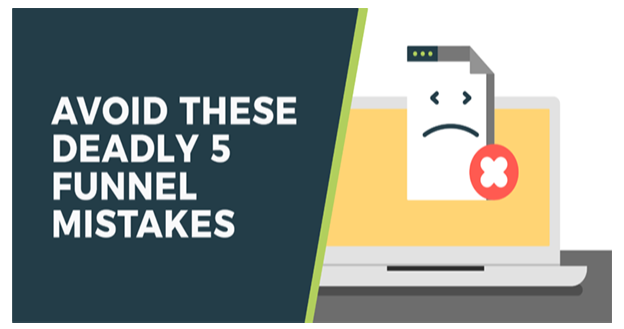
What are some common mistakes to avoid when closing the sale in the reverse funnel system?
When closing the sale in the reverse funnel system, several common mistakes must be avoided to ensure success. Here are some of the most common mistakes:
- Lack of Personalization: Failing to provide personalized messaging and support can cause leads to lose interest and abandon the sales process. Ensure you address your leads’ needs and concerns and provide customized recommendations based on their behavior and engagement with your brand.
- Overwhelming Your Leads: Bombarding your leads with too much information or promotional messaging can prevent them from feeling overwhelmed and losing interest. Ensure you provide valuable content and support and give your tips space and time to make decisions at their own pace.
- Lack of Urgency: Failing to create a sense of urgency can cause leads to delays in making a purchase or abandoning the sales process altogether. Ensure you provide limited-time offers or promotions that create a sense of urgency and encourage leads to purchase.
- Lack of Follow-Up: Failing to follow up with leads who have not yet made a purchase can cause you to miss opportunities for conversion. Ensure you consistently follow up with leads and provide personalized messaging and support to encourage them to take action.
- Ignoring Customer Feedback: You need to listen to customer feedback to avoid missing opportunities for improvement and damaging your relationship with your leads. Ensure you actively solicit and incorporate customer feedback into your closing strategy.
By avoiding these common mistakes and focusing on a strategic approach to closing the sale, you can convert high-quality leads into paying customers and achieve tremendous success in the reverse funnel system.
Scaling Your Funnel
Scaling your funnel is a critical step in the reverse funnel system, where you expand and optimize your horn to attract and convert more high-quality leads. Here are some effective techniques for scaling your funnel:
- Diversify Your Traffic Sources: Expanding your traffic sources can help you reach a larger audience and attract more high-quality leads. This can include social media advertising, paid search advertising, content marketing, and influencer marketing.
- Optimize Your Funnel: Analyzing data and optimizing your funnel can help improve conversion rates and maximize ROI. This can include A/B testing, improving website design, and optimizing your call-to-action.
- Automate Your Lead Nurturing: Automating your lead nurturing process can help you scale your funnel by reaching more leaders and reducing the workload on your team. This can include email marketing automation, chatbots, and personalized content recommendations.
- Focus on Retargeting: Retargeting leads who have already engaged with your brand can help you convert more high-quality leads into paying customers. This can include retargeting ads and personalized messaging addressing their needs and concerns.
- Personalize Your Messaging: Personal messaging and support can help you build trust and relationships with more leads. Use data to personalize your messaging and provide personalized recommendations based on their behavior and engagement with your brand.
Using these techniques to scale your funnel, you can attract and convert high-quality leads and achieve tremendous success in the reverse funnel system. It’s important to continually analyze data and optimize your strategy to provide personalized messaging and support to those most likely to convert.
Why is scaling your funnel important in the reverse funnel system?
Scaling your funnel is essential in the reverse funnel system because it allows you to expand and optimize it to attract and convert more high-quality leads. Here are some reasons why scaling your funnel is essential:
- Increased Lead Generation: Scaling your funnel can help you reach a larger audience and generate more leads. By diversifying your traffic sources and optimizing your funnel, you can attract more high-quality leads and improve your conversion rates.
- Improved ROI: Scaling your funnel can help you maximize your return on investment (ROI) by ensuring that you are focusing your efforts on the most qualified leads. You can improve your ROI and reduce wasted resources by providing personalized messaging and support to those most likely to convert.
- Greater Customer Loyalty: Scaling your funnel can help you build strong relationships with more leads and increase customer loyalty. By providing personalized messaging and support, you can improve customer satisfaction and reduce the likelihood of churn.
- Increased Revenue: Scaling your funnel can help you increase revenue by attracting and converting high-quality leads. Optimizing your funnel and providing personalized messaging and support can improve your conversion rates and generate more revenue.
Scaling your funnel is a critical step in the reverse funnel system. Expanding and optimizing your funnel can attract and convert high-quality leads, improve your ROI, build greater customer loyalty, and increase revenue. It’s important to continually analyze data and optimize your strategy to provide personalized messaging and support to those most likely to convert.

What are some techniques for scaling your funnel in the reverse funnel system?
Several effective methods for scaling your funnel in the reverse funnel system exist. Here are some of the most common methods:
- Diversify Your Traffic Sources: Expanding your traffic sources can help you reach a larger audience and attract more high-quality leads. This can include social media advertising, paid search advertising, content marketing, and influencer marketing.
- Optimize Your Funnel: Analyzing data and optimizing your funnel can help improve conversion rates and maximize ROI. This can include A/B testing, improving website design, and optimizing your call-to-action.
- Automate Your Lead Nurturing: Automating your lead nurturing process can help you scale your funnel by reaching more leaders and reducing the workload on your team. This can include email marketing automation, chatbots, and personalized content recommendations.
- Focus on Retargeting: Retargeting leads who have already engaged with your brand can help you convert more high-quality leads into paying customers. This can include retargeting ads and personalized messaging addressing their needs and concerns.
- Personalize Your Messaging: Personal messaging and support can help you build trust and relationships with more leads. Use data to personalize your messaging and provide personalized recommendations based on their behavior and engagement with your brand.
- Expand Your Product or Service Offering: Expanding your product or service offering can help you attract and convert more high-quality leads. This can include offering complementary products or services, upselling or cross-selling, or developing new products or services based on customer feedback.
Using these techniques to scale your funnel, you can attract and convert high-quality leads and achieve tremendous success in the reverse funnel system. It’s important to continually analyze data and optimize your strategy to provide personalized messaging and support to those most likely to convert.
What are some common mistakes to avoid when scaling your funnel in the reverse funnel system?
Here are some common mistakes to avoid when scaling your funnel in the reverse funnel system:
- Neglecting Data Analysis: You need to analyze data and optimize your funnel to avoid missing opportunities for improvement and reduce your ROI. Ensure you continually analyze data and optimize your funnel to provide personalized messaging and support to those most likely to convert.
- Overinvesting in Traffic Sources: Overinvesting in a single traffic source or marketing channel can cause you to miss opportunities for diversification and reduce your ability to scale. Make sure you diversify your traffic sources and focus on those that provide the highest ROI.
- Failing to Personalize Messaging: Failing to personalize your messaging and support can cause leads to lose interest and abandon the sales process. Ensure you provide personalized recommendations and support based on their behavior and engagement with your brand.
- Ignoring Customer Feedback: You need to listen to customer feedback to avoid missing opportunities for improvement and reduce customer loyalty. Ensure you actively solicit and incorporate customer feedback into your scaling strategy.
- Neglecting Lead Nurturing: You need to automate your lead nurturing process to avoid missing opportunities for conversion and reduce the efficiency of your scaling efforts. Ensure you are automating your information nurturing strategy to reach more leads and reduce the workload on your team.
By avoiding these common mistakes and focusing on a strategic approach to scaling your funnel, you can attract and convert more high-quality leads and achieve tremendous success in the reverse funnel system. It’s important to continually analyze data and optimize your strategy to provide personalized messaging and support to those most likely to convert.

